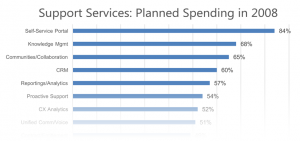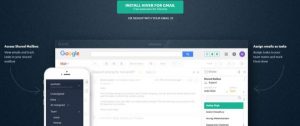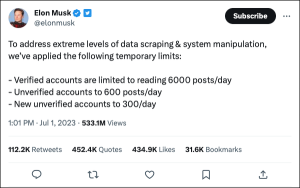 Although leadership and vision may form the heart of an organization, people are its soul. That’s why creating the right company culture has become imperative for businesses in today’s rabidly competitive market. Yet what kind of culture works best? Performance-based? Engagement-based? For contingent workforce program managers, the answer gets murkier. Contractors and staffing providers play an instrumental role in enterprises across all industries and service categories. Naturally, performance factors heavily into their selection and usage. However, engagement is equally critical. Because these professionals operate on the periphery of the organizations they serve, it’s easy for them to experience a sense of disconnection. I believe contingent workforce program managers have a golden opportunity to unite performance and engagement. With their influence, they can work with clients to create a purpose-based, collaborative culture for hiring managers, staffing partners and talent.
Although leadership and vision may form the heart of an organization, people are its soul. That’s why creating the right company culture has become imperative for businesses in today’s rabidly competitive market. Yet what kind of culture works best? Performance-based? Engagement-based? For contingent workforce program managers, the answer gets murkier. Contractors and staffing providers play an instrumental role in enterprises across all industries and service categories. Naturally, performance factors heavily into their selection and usage. However, engagement is equally critical. Because these professionals operate on the periphery of the organizations they serve, it’s easy for them to experience a sense of disconnection. I believe contingent workforce program managers have a golden opportunity to unite performance and engagement. With their influence, they can work with clients to create a purpose-based, collaborative culture for hiring managers, staffing partners and talent.
Performance, Engagement or Purpose?
The jobs with the highest recorded levels of engagement and satisfaction are those where workers feel they’re making a difference. So how do business leaders create a culture of purpose when they’re torn between performance or engagement. It’s one of the biggest challenges for employers. Improving or reshaping corporate culture requires changing behaviors — fostering collaboration, humility, information sharing, transparency and placing the needs of the mission above the goals of individuals. Easier said than done, as many enterprises have discovered.
In 2014, Gallup completed research aimed at settling this philosophical debate. On one side of the issue, performance-oriented managers believe that high-performing teams spring from shared objectives, goals and desired outcomes. The counterpoint managers find that achieving results lies in fostering engaging business cultures that motivate employees.
“What we discovered is that managers don’t have to choose between creating strong, positive teams or focusing on high performance and accountability,” Gallup explained. “High-performance managers do both. They are strengths-based, engagement-focused, and performance-oriented.”
Last week, Aberdeen Group analysts produced similar results in the report, “An Employee-Centric Digital Workplace: From Onboarding through Engagement and Retention.” When managers realized the need to tie performance and engagement together, the results improved dramatically. Researchers discovered that best-in-class organizations are 30 percent more likely to implement employee engagement strategies. They’re also 50 percent more likely to enable workers to track their performance against clearly defined goals. And companies with a formal engagement strategy are almost 70 percent more likely to increase their revenue on a year-over-year basis.
“Simply put,” Aberdeen concludes, “performance management ensures that all employees are dedicated to organizational operations, and employee engagement creates a culture in which employees feel excited about and satisfied with their work. These functions are complementary.”
Creating a Contingent Workforce Business Culture with Clients
Culture isn’t just a concern for employers, it’s a huge consideration for contingent workforce program managers and their staffing partners. They must integrate with their clients’ cultures, assimilate others into the shared culture, and promote values that engage the right candidates. This is the reason why implementation plans often necessitate transition and change management strategies. Yet, even with the best laid tactics and good intentions, cultural change is difficult.
Contingent workforce programs, first and foremost, must deliver on performance. That requires connecting with exceptional people. Engagement becomes a little trickier because it involves multiple parties: hiring managers, staffing suppliers and workers. As a contingent workforce program leader, never forget that your team becomes part of the culture for every client you support. Your contributions are profound and important. So let’s look at some ways you can work with your clients to expand a business culture that embraces the contingent workforce.
Generate Awareness
Effective change begins with raising awareness. Beyond communicating project timelines and objectives, contingent workforce program managers can establish a unique brand, promote visibility and illustrate their compelling role in the client company’s culture.
- Generate name and project recognition among target audiences. Many MSPs and staffing providers have done through this creative approaches such as providing talent with branded coffee mugs, polo shirts, pens, mousepads and more.
- Capture their attention. Contingent workforce program leaders can create internal publicity campaigns through slick promotional materials, newsletters, get-to-know-us cards, entertaining yet informative interactive handbooks and more. The Motley Fool earned much praise for its culturally rich online handbook, and it’s a great model for conceptualizing your own unique content.
- Spread the message. Provide hiring managers, staffing partners and talent with a clear understanding of how the program will benefit them. Explain the new dynamics, people, processes, contributions to the client’s overall mission, and how teams will interact. Make sure these details reach every department leader, manager and executive who will come in contact with the program, regardless of where they’re located.
- Establish and communicate metrics for success. Measuring progress and reporting it to stakeholders will instill a sense of comfort and confidence, making bumps in the road much easier to avoid or overcome. This technique goes a long way in fostering adoption for the program.
Educate
To succeed, we can’t just present clear instructions, expect others to follow through and rest on our laurels. A productive and empathetic learning process is crucial. As a contingent workforce program leader, get involved in the early stages of implementation with your own project teams. It’s an excellent way to capitalize on the learning opportunities exposed during the discovery process. You’ll gain a thorough understanding of the client’s existing culture, executive support and structure of the partnership.
Participation at this stage allows contingent workforce program managers to develop strong relationships with client sponsors and maintain open communications throughout the partnership. Actively engaged business leaders and committed hiring managers are essential to building organizational buy-in. Hosting inspiring and educational sessions can make a positive difference for everyone involved. Contingent workforce program managers can use this opportunity to:
- Advertise their support structure for clients, suppliers and contingent talent.
- Focus on the needs of individual stakeholders and help those who are resistant to the change. Provide a detailed understanding about the changes and how they will affect people specifically.
- Share expectations among the group.
- Collaborate with client teams to facilitate a seamless transfer of duties and responsibilities for the management of suppliers and talent.
- Train users about new policies and provide additional opportunities for cross training.
- Recognize and emphasize the contributions of each team member in the program.
Some creative ways of supplementing the learning process could include developing an online library of useful materials, instructional and informative videos, podcasts and more.
Engage
With the introduction of an outsourced contingent workforce program, emotions can run high. The hiring managers who were previously in charge may feel blamed, rebuked or somehow exposed for perceived failures. In reality, the decision to outsource is made to ease the burdens on those same managers so they can concentrate on their core duties. And that’s the message that needs to be conveyed. A lot of managers understand that internally administered contingent labor programs don’t work as well as planned — they just don’t know how to fix them. People will be receptive to a message that’s properly framed, which comes with humility, executive support and the assurance that you’re there to help them — not place blame or create a model intended to benefit only certain individuals.
- Start the program and relationship building process with a clean slate. Don’t dwell on or emphasize issues that existed with the program before. Begin fresh, drawing those managers into the new culture. Request their expertise and insights from their experiences before your program. Excite them about the advantages and support you’re delivering.
- Establish informal meetings on a frequent and recurring basis, which aren’t tied to formal business reviews. Structure these discussions as safe zones. When people can interact in a forum unconnected to issues of performance or compensation, they’re more comfortable having meaningful, productive and candid dialog.
- Give hiring managers and client leaders time to practice the interactions, behaviors and roles that come with the change. Getting accustomed to the new contingent workforce program will take patience and understanding.
Ensure Accountability
Accountability must be established, understood and maintained for cultural change to proceed smoothly. A well-run initiative can make every participant more collegial, collaborative and aligned to the larger corporate mission. However, performance must remain a top priority. Bringing in world-class staffing partners should never be an excuse for contingent workforce program managers to relax. And although an outsourced solution removes a lot of work from the plates of hiring managers, that doesn’t mean they should have no involvement in the program.
Set expectations and define responsibilities clearly with visible support from executive leadership. Success requires strong operational results from every party to keep the initiative competitive.
Creating a Purpose-Driven Business Culture for All
When we talk about business success today, we often reference qualities such as employment brand, mission, technological advances and the introduction of offerings that rattle the market. They’re all core to a company’s realization of its goals. However, they’re also parts of a larger sum. The essence of a company is people. The difference between running a finely tuned machine or becoming the custodian of a colossal mess is a vibrant workforce. And the talent who populate it are the pioneers, the inventors, the advocates, the actors. These are the constructs of company culture. And an outsourced contingent workforce program is no different.
The program managers, staffing partners and the contingent talent are just as essential to the client’s organization as its internal employees. Contingent workforce program leaders can make a tremendous impact by helping clients develop a performance-oriented and engagement-focused culture that supports the inclusion of the contingent workforce — its managers, staffing providers and contractors.
Business & Finance Articles on Business 2 Community(50)
Report Post






